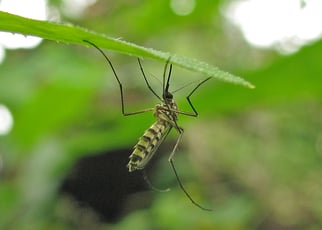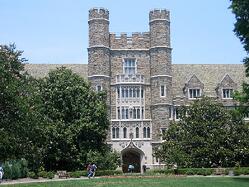 According to the Center for Disease Control, an estimated 198 million cases of malaria occurred worldwide and 500,000 people died, mostly children in the African Region.
According to the Center for Disease Control, an estimated 198 million cases of malaria occurred worldwide and 500,000 people died, mostly children in the African Region.
People stricken with the mosquito-borne illness often experience fever, chills, and flu-like symptoms. Left untreated, they may develop the most severe form of malaria, known as cerebral malaria.
In this deadly condition, infected red blood cells are trapped within the microscopic vessels of the brain. This impedes critical oxygen delivery, resulting in coma and often leading to death.
A recent collaboration between an international team of scientists, including researchers at Duke Medicine, has showed that cerebral malaria is also marked by lower production of nitric oxide in the cells lining these micro-vessels.
Reintroducing nitric oxide back to the cells could help prevent malaria-infected red cells from sticking to blood vessel walls and avoid this dire condition.
The teams conducted field research in Tanzania, Indonesia, Australia and the U.S. and found that a critical co-factor for an enzyme that produces nitric oxide must be “charged” with potential energy.
 According to a university press release, “This co-factor is called tetrahydrobiopterin (abbreviated BH4). It exists in both energy-rich and energy-drained forms – or like a battery, in a charged and discharged state. In normal cells, the BH4 battery is always poised in the charged state. “
According to a university press release, “This co-factor is called tetrahydrobiopterin (abbreviated BH4). It exists in both energy-rich and energy-drained forms – or like a battery, in a charged and discharged state. In normal cells, the BH4 battery is always poised in the charged state. “
The researchers measured these molecules in severe malaria cases and found that there was plenty of BH4 co-factor, but that it had been discharged, or “run down” to continue the battery analogy. They speculated that the BH4 discharge, or “draining” might be due to oxygen radicals associated with malaria.
Scientists say the next step is to find a way to supply energy back to BH4, with potential in existing vascular treatments. If they are successful, there is the potential to save millions of lives worldwide.
In addition to this important, and potentially live-saving research, scientists at Duke University are constantly making great strides against malaria and in other areas of life science research.
Researchers at Duke University are among the thousands of scientists worldwide who are standing up to this terrible disease, as evidenced by the millions of dollars in annual malaria research funding doled out by the National Institutes of Health.
In 2014, Duke researchers received $2.6M in NIH grants for several projects related to malaria research, treatment, and control, and continue to be frontrunners in the fight against this deadly disease.
 More examples of recent life science research funding at Duke University:
More examples of recent life science research funding at Duke University:
- Duke University will receive a 6-year, $137 million grant to aid in the discovery of an HIV vaccine
- A five-year, $47 million grant has been awarded from the NIH to the Duke Translational Medicine Institute for biomedical research advances to patient care.
- Duke’s 2013 Life Science R & D Expenditures exceeded $811 million
- Duke was the 10th-highest funded institution by the NIH in 2014, with $278,832,108
Biotech vendors and laboratory equipment suppliers will find hundreds of well funded and decision making life science researchers in attendance at the 16th Annual BioResearch Product Faire™ Event at Duke University on May 13, 2015.
To find out more about marketing your products to hundreds of researchers at this premier event, click below:
Life science professionals can attend this premier event free of charge. For more information, click below:
For a full schedule of 2015 Biotechnology Calendar, Inc. events, click here: 



